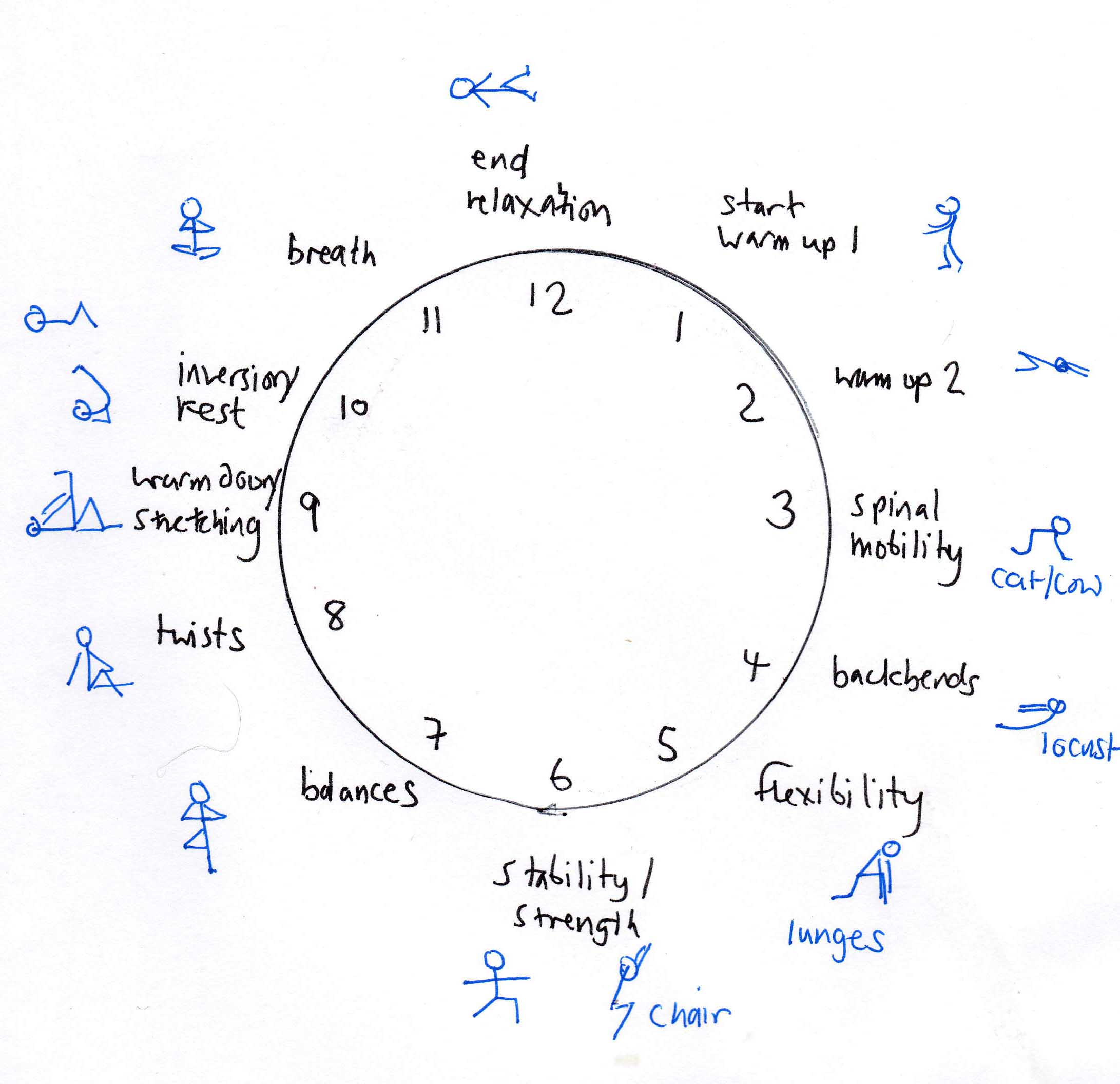Published: Feb 4, 2017 by Lucy Tennyson
Yoga blog and class notes 4 February 2017
The answer, of course, is yes: we need strength i.e. strong and healthy muscles that support our bodies and joints, for instance when we stand/walk/run, or lift heavy objects. We also need strength to move into and keep the joints stable when we hold yoga poses.
At the same time, we want our muscles lengthen so we are flexible enough to be able to bend down to pick up something we’ve dropped on the floor, or sit behind a desk or on the sofa!
The skeleton forms the main structural support of the body, and is made up of strong bones. But unless we use our muscles to pull on the bones and encourage their constant renewal through absorption of calcium, they will gradually lose density as we get older and weaken. To stop this happening, it’s the stronger, weight bearing yoga poses that are more beneficial than the stretchy ones.
The sensation of release that we get after a deep yoga stretch is the muscle returning to its resting muscle length after contracting after making effort. Problems can arise in two main ways: firstly if a muscle gets stuck in a contracted state when overused it can become tight and stiff. On the other hand if underused and weak, it can become stuck in its resting length unable to contract effectively, making us feel wobbly in a yoga pose.
In either situation the solution is to tone up the muscles by making them stronger. We do this by first working them, and then relaxing, and afterwards stretching gently.
My sequence this week aimed to work on this strengthen/relax principle. The sketches below aim to act as a reminder of some of our practice. It’s important to first warm up through gentle movement (adding sun salutations if you wish), and then focus on working on different groups of muscles – the upper body; the ‘core’ or corset of muscles running around the torso; and the legs. Add some twists and gentle stretches as the end, and make sure you relax thoroughly afterwards in savasana.
Of course, ancient yogis never concerned themselves with bones, ligaments and muscles – they weren’t working at a physical level. They were more concerned with training the body to sit for long periods in meditation. But by adopting and expanding on their practices, we have come to realise how effective these postures are at improving our well being. This is because the mind, body and spirit are intertwined - by working on yoga postures we are helping ourselves in more than just the physical body.
